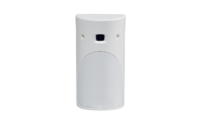As Do-It-Yourself security options — like Ring, Google Nest and Arlo — continue to grow in popularity, security dealers and integrators have begun offering plug-and-play security panels and Do-It-With-Me packages ready to be easily installed with the dealer/integrator’s guidance. Some in the industry see this as a threat to traditional security companies, others see it as being a potential growth opportunity. SDM interviewed professionals from some of the most prominent names in the sector to weigh in on the trends shaping DIY/DIWM.
SDM: Can you speak to the current state of the DIY offerings?
Choate: DIY security solutions have become increasingly popular in recent years, especially with more competitors entering the market. They are an affordable and user-friendly alternative to traditional systems. However, there are also drawbacks to DIY, such as insufficient features, limited professional monitoring options, and higher potential for false alarms due to installation error.
DIY security systems can be a good option for homeowners and businesses who are looking for an affordable and easy-to-use security solution. However, it is important to weigh the benefits and drawbacks of these systems before making a decision, including the commitment for a proper install.
Donovan: For the industry, those products have become so prevalent. For consumers, it’s interesting because companies — like the ones you’ve mentioned — are all out there sticking their claim in the DIY market. Now, granted those companies have been out there for some time, but they’re seen by many, at least many in this industry, as lacking a personal interest in their customer’s security. It’s like they’re almost a disembodied entity out there. Unlike your traditional alarm dealers, they don’t know what it means to provide that peace of mind.
Now for the traditional alarm dealers on the other hand, they’re better equipped to support, if you will, that average DIY user because they have the installation experience — they can talk to a client about the process, they know the best practices. I think, more importantly, they know to pick up the phone when the customer calls. They’ve built their businesses on that customer experience, and that’s how they stay in that market.
Chhangani: The DIY Smart Home industry initially began with simple monitoring devices that were created to solve one problem at a time. For example, Arlo developed battery-powered cameras because users could not wire them due to cost and other factors. Similarly, Ring focused on video doorbells to let you see who’s at your door, while NEST was one of the first to get cameras recording to the cloud. All these companies solved a unique problem exceptionally well. However, as more smart home products emerged, it became challenging for end users to manage them, since each product had its own unique strengths, resulting in a fragmented user experience. Today, all of them offer everything and have been adding third-party monitoring features.
It is important to note that companies like ADT and other security firms focus on making their customers secure and safe. Their products and services are defined by their core focus on safety, security and peace of mind. While we do not expect such events, when they do occur, the current DIY solutions may fall short of providing a foolproof solution. The best analogy is when a traditional car company tries to make an electric car; they think about how to convert it to electric, but when you look at Tesla, they have a ground-up design on what is required for an electric vehicle.
SDM: What about the state of DIWM offerings?
Choate: Do-It-With-Me solutions are an emerging trend in the security market and accelerated during COVID. These systems fill the gap between fully DIY and professionally installed systems, offering a hybrid approach that combines the affordability of DIY with the expertise of professional programming. DIWM is a relatively new concept but it is gaining traction; though the remote “technical” assistance does not alleviate the “labor” side of the install.
This growth is due to several factors, like increasing popularity of DIY solutions, the desire for greater control and customization, and cost effectiveness. As younger, more tech-savvy, generations start buying more homes, these solutions are likely to continue growing because these users are interested in customizing their system to their specific needs. The ability to easily add to and modify the system is also appealing to these customers.
On the integrator side, there’s opportunity to add prepackaged solutions that meet this middle ground and add new revenue streams through sales, setup support, and recurring revenue. It can also reduce overhead, eliminating the need for most truck rolls. As DIWM solutions continue to evolve, they are likely to find growing adoption among both homeowners and security professionals.
Donovan: We see there’s a real opportunity. A growing percent of households in the U.S. are using some sort of a do-it-yourself security product. That could be a doorbell camera; it could be an indoor video camera. And traditional dealers are starting to notice that. So they’re starting to offer simple self-install add-ons to their traditional offering. And from the DIY companies that are out there, by offering something that others can’t — like professional support from an established, local, brick-and-mortar security alarm company — they’re starting to make a difference in that industry and in that market.
Chhangani: This is an excellent initiative that aims to bridge the gap between DIY solutions and users who are not well versed in new technology. I believe it’s important for certain user groups, particularly those who are less tech savvy. We need to assist our customers, but I expect the DIY solutions to be super simple. DIWM will continue to help bridge this gap and also help users realize the full potential of a solution. Often, end users get accustomed to one thing; but unless we walk them through all the benefits, they won’t realize its full value.

SDM: What are the current trends in the DIY/DIWM sector?
Choate: There are a few key trends integrators should consider. First, many security systems are integrating smart home features into one solution. Homeowners are increasingly looking for ways to make their homes more comfortable, efficient and secure — smart home control and automation is one of the most popular ways to do this. Secondly, wireless technology is making installation, maintenance, and future additions much easier for the homeowner.
Also, many of these solutions are set up for self-monitoring, allowing homeowners to monitor their system themselves without paying for professional monitoring services. This can be a cost-effective option for homeowners who are comfortable monitoring their own security. Finally, DIY and DIWM solutions are increasingly offering dedicated apps that allow homeowners to arm and disarm their system, view live video feeds, and receive alerts from anywhere. This gives homeowners peace of mind knowing that they can monitor their security system even when they are away from home.
Donovan: Companies have tried to use those types of products in a DIY model but because those types of products were designed for the professional installer, the setup and the program in the systems can be confusing for the average DIY user. I think, as a result, more traditional alarm dealers are somewhat reluctant to offer them, because they’re convinced — I hear this from customers a lot — that those customers would only end up calling and getting them to help with the installation anyway. So many dealers would rather send an installer to do the job. You have to remember, the industry was built around a model that focused on professional installations. There’s an old adage: if it were easy, everybody would do it. That’s the traditional alarm installers mindset.
Chhangani: In the world of DIY, the trend is to develop tools to do everything yourself. However, this trend comes with a downside: users are presented with too many options, which can lead to confusion and frustration. While DIWM may seem like a quick fix, it does not help every day with new features or functions. The goal should be to shift the focus to making technology more user-centric and less device-centric. Everything we are relying on in DIWM needs to be addressed in the next DIY setup.
SDM: How do you view the future of both DIY and DIWM?
Choate: The future of DIY and DIWM security solutions is bright. We have seen an increase in adoption as manufacturers continue to innovate and make their solutions even more user friendly, affordable and effective. They’re researching what professional systems are doing and expanding their features and offerings to close the feature gap. This includes the addition of artificial intelligence to improve detection accuracy, reduce false alarms and personalize security settings. There will be a continued diversification of DIY and DIWM security solutions, with products tailored to different needs and budgets. This will include solutions for homes, businesses, apartments and other types of properties. All of this opens the door for professionals to make a DIY solution a DIWM solution. While these security solutions are designed to be easy to install, there will be an increasing role for professional involvement. This could include virtual installation assistance, troubleshooting, ongoing support and more.
Donovan: What I think is that more professional installation companies feel squeezed by DIY. The more professional installation companies feel squeezed by DIY, the more they’re going to be compelled to at least dip their feet in the water. Some companies will always choose to send an installer to do the job, especially on the more traditional security jobs. And I, honestly, I don’t think you’re going to see a DIY solution being used in some of the larger, more complex custom installations, which is fine.
But we’re already seeing that paradigm shift in this industry. Dealers have been citing major challenges in staffing as the number one business inhibitor. That’s why more and more companies are starting to offer some form of DIY solution in addition to their traditional installed systems.
Chhangani: DIYM will help the DIY market grow by educating end users.
SDM: Do you think DIY is a benefit or a threat to traditional dealers?
Choate: Both. On one hand, DIY security solutions can help drive market awareness of features and the overall need for a smart home security system. Traditional dealers simply reach a wider audience of potential customers. These solutions are typically more affordable and easier to install than traditional systems, which can make them more appealing to homeowners who are on a tight budget or who are not technically savvy. Additionally, DIY security solutions can help traditional dealers expand their product offerings and differentiate themselves from competitors.
On the other hand, DIY security solutions can also pose a threat to traditional dealers. By making security systems more accessible to a wider range of customers, DIY solutions can make it harder for traditional dealers to differentiate their services and can lead to losing value for the profession. DIY solutions can also reduce the need for professional interaction, which could lead to false alarms and poor experiences devaluing the technology as a whole.
In order to succeed in the face of DIY security solutions, traditional dealers will need to adapt or add to their business models. This may include offering more comprehensive security packages that include professional installation and monitoring, providing additional customer support services, and expanding into new areas of the security industry, such as networking, cybersecurity, and smart home integration — areas where the profession demonstrably exhibits value to the consumer.
Donovan: I think some traditional dealers will still view DIY as a threat. They believe that DIY still eats away at their business, but there are many who are starting to realize how DIY can actually be an opportunity. We talk about this all the time with our dealers. That’s that paradigm shift that I talk about.
Chhangani: Traditional dealers can be your trusted partner in the journey of DIWM, providing personalized tutoring on how to best utilize new technology.
SDM: How can security dealers capitalize on those who do want DIY?
Choate: Offer products, systems and services that integrate with DIY products. Smart homes are often not built in a day. A homeowner may start with a Google Nest doorbell and camera, an Ecobee thermostat, and a MY Q garage door opener, then later add Philips smart lighting. Offer a system that works with and integrates all the popular smart home brands, which consolidates the user experience into one app and ties together with logic to make a true smart and secure home.
Dealers can offer DIY kits with professional installation assistance. This gives dealers the opportunity to tap into DIY product sales and provide setup support for those who want the convenience of professional setup without sacrificing the control and affordability of DIY. This in turn will likely lead to additional sales opportunities and gives the dealer the opportunity to establish the need for a professional.
Dealers can also offer DIY troubleshooting and maintenance services, addressing any issues that customers encounter after installation. This can help build trust and encourage repeat business, either on service, DIY product sales or professional products — should the customer want to upgrade at some point. Dealers can also provide additional services that support DIY, such as sensor placement recommendations, security risk assessments and network capacity audits. These can add value and generate revenue from DIY customers without requiring full-scale installation.
Donovan: The percentage of households with internet that have some sort of a DIY security product installed is expected to grow. SDM reported some years ago that by the end of the decade, the global video door market is expected to reach $4 billion. Who doesn’t want a piece of that? I think that dealers can start looking past their traditional model and they can start considering solutions like NAPCO’s Prima. Prima gives them the ability to compete in the growing market. We have lower equipment costs and competitive service rates. It is a self-installed security product that can easily be provisioned.
Dealers can leverage their local presence to distinguish themselves from current DIY offerings like Ring and SimpliSafe. They can do this by offering professional installation, support and personalized service as an established security company. Above all else, that is going to resonate with customers. At the end of the day it translates into peace of mind. If you ask any security dealer, that is what they base their business off of: being able to provide peace of mind for their customers.







